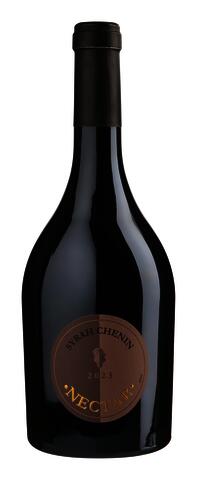Chenin de France
Wines color
Taste profile
Sweetness
Body
Acidity
Tannins
Alcohol
Table of contents
Wines produced
Occasions
Wine pairing
Chenin de France is astonishingly powerful. Its liveliness, fruity crispiness and long finish give it a unique, rich style that wine enthusiasts just love. Its strength enables it to stand up to and enhance spicy foods, namely Thai and Indian cuisine. Strongly flavored fish and seafood such as prawns and goatfish adore being served with Chenin
Main food pairings:
- Vegetable salads, Ratatouille and Antipasti
- Raw or grilled Fish and Seafood
- Pasta and Rice in cream sauce
- Goat's Cheeses
Aperitif ideas
Medal winners
Encyclopedia
Origin
Chenin originally comes from the banks of the Loire in central France, near Angers.
Aromas
Chenin is renowned for its mineral notes of chalk and flint, commonly encountered in the river valleys of central France. More generally, it features pear and ripe quince aromas when young, backed by hints of acacia honey, candied fruit and lemon. Sometimes, spicy notes of ginger or lime blossom can also be detected.
Wines profile
Depending on growing conditions and soils (limestone or schist), this variety can be used to make either sparkling wines or dry wines, as well as sweet wines. Its potential acidity is always high, however, and its wines are always elegant and generally quite lively. It also has good potential for ageing, namely thanks to its prominent acid.
Cultivation areas
In France, Chenin is planted mainly along the banks of the Loire, primarily near Angers and Tours. More recently, it has been introduced into the southwestern Mediterranean region, but the surface areas are still very small.
Precocity
Chenin is a relatively early-budding variety, as it buds one day ahead of Chasselas, the benchmark. Nonetheless, it is a relatively late ripener, requiring 3 to 3 ½ weeks more than Chasselas to reach peak ripeness.
Vigor
Highly vigorous, Chenin is also a fertile grape variety that can be extremely productive in very rich soils. If temperatures drop below freezing in springtime, however, the secondary buds will be less fertile.
Soils
Chenin’s qualities are expressed in very different ways depending on the type of soil it is grown in. When grown in sand, it gives light, charming wines to be enjoyed young. Clays and clay-limestone soils give fuller bodied, more intense wines with a lot of volume, where as calcareous soils lend it a mineral touch with more acidity.
Climat
Chenin, like Chardonnay, is a rather versatile grape variety. Nonetheless, it prefers the cool areas at the northern border of the region where it is grown. This cool climate, found in areas such as the banks of the Loire, enables the variety to best express its personality.
Susceptibility to diseases and pests
Chenin is particularly sensitive to gray mold, oidium and wood diseases (eutypiosis and esca). It has better resistance to mildew, black rot and anthracnose, however.
Use
Chenin is used only to produce wine.
Descriptive elements
Chenin can be recognized by its young shoots, which are densely covered with flat-lying hairs, as well as by its young leaves with bronze patches. Chenin’s adult leaves have three to five clearly distinguishable lobes, with a slightly open petiolar sinus, or with slightly overlapping lobes. On the lateral lobes, the teeth are medium-length, with convex sides, and the veins have a strong red anthocyanic pigment. The leaf blade is quite bubbled and its underside has a moderately dense coat of flat-lying hairs. Chenin’s clusters are medium to large in size, while its berries are small to medium-sized and round.
Clonal selection in France
The eight approved Chenin clones (specifically named Chenin B) are numbers 220, 278, 416, 417, 624, 880, 982 and 1018. Since 1996, more than 200 clones have been planted at a conservatory in the vineyard near Angers.
Map of France
Chenin originally comes from the region between Nantes and Orléans. France is the world’s second largest producer of Chenin, after South Africa.






